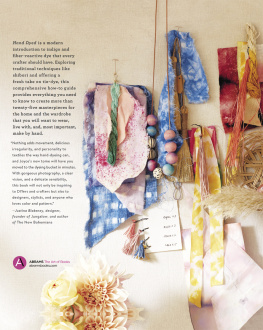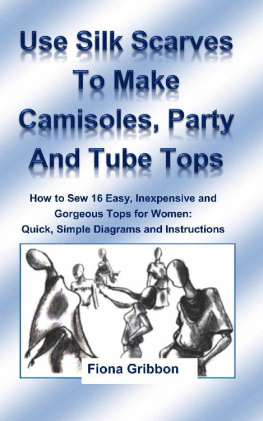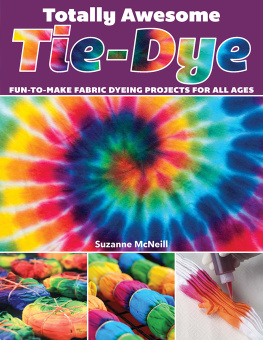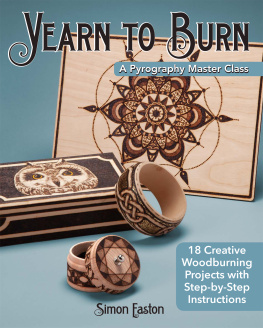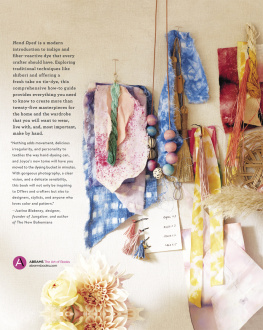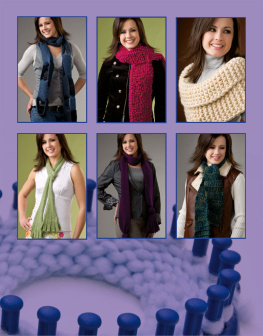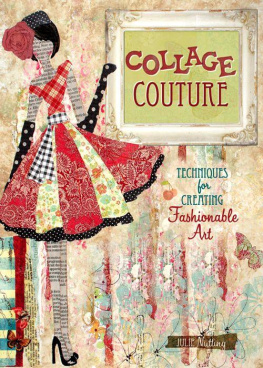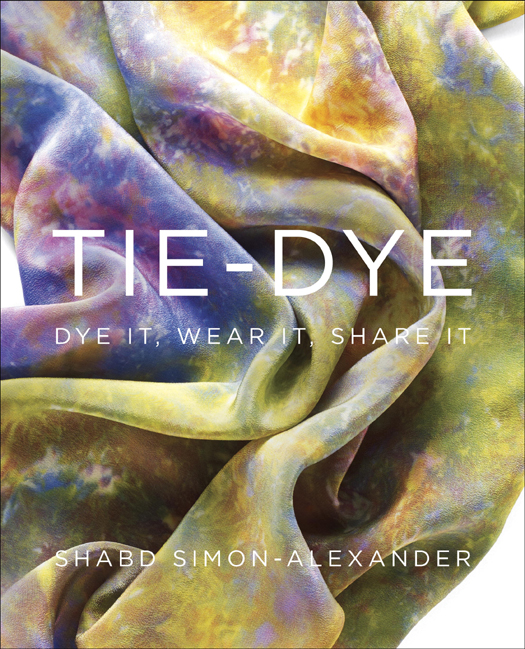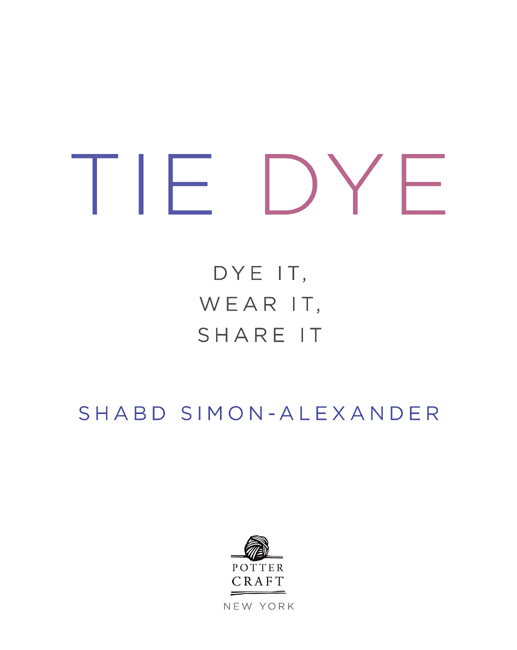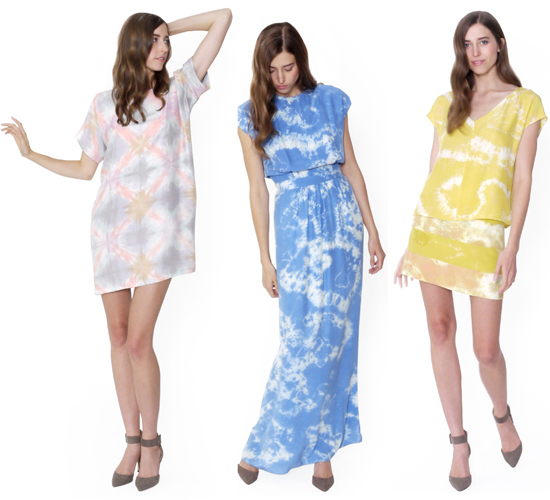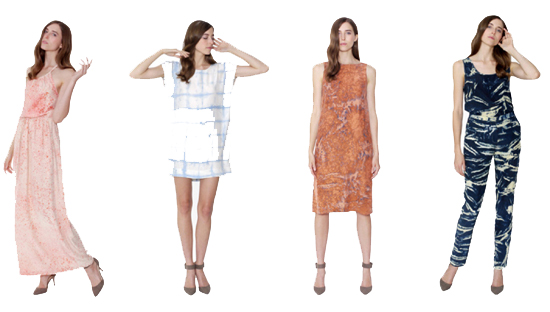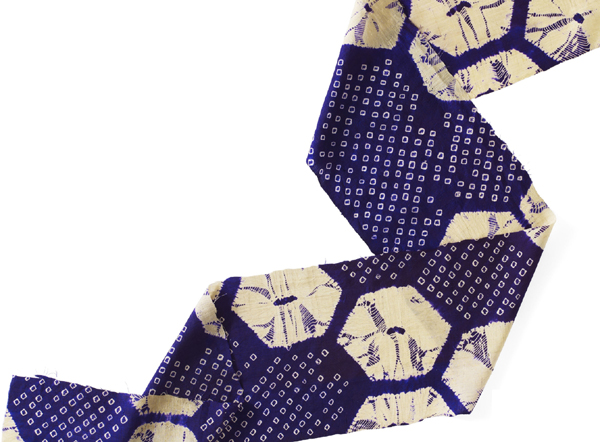Copyright 2013 by Shabd Simon-Alexander
All rights reserved.
Published in the United States by Potter Craft, an imprint of the Crown Publishing Group, a division of Random House, Inc., New York.
www.crownpublishing.com
www.pottercraft.com
POTTER CRAFT and colophon is a registered trademark of Random House, Inc.
Library of Congress Cataloging-in-Publication Simon-Alexander, Shabd.
Tie-dye: dye it, wear it, share it / Shabd Simon-Alexander.
--First Edition
pages cm
1. Tie-dyeing. I. Title.
TT853.5.S56 2013
746.664d;c23
2012048014
eISBN: 978-0-307-96574-5
Still-life photography by Sarah Anne Ward
Photography direction and styling by JoJo Li
Illustrations by JoJo Li
Model and author photography by Paul Mpagi Sepuya
v3.1
CONTENTS
INTRODUCTION
My introduction to tie-dye happened by chance. I was at a garden party where the host had set up an area for tie-dyeing with bottles of brightly colored dye laid out on a picnic table. She gave me a five-minute lesson, and I was hooked. I knotted up old T-shirts and tie-dyed into the night, long after everyone else left. I ended up spending the rest of the summer in that community garden playing with my newfound obsession.
Having studied fine art and photography in school, I was still searching for a distinctive way to express myself, and something about tie-dye really spoke to me. I found it to be the perfect medium with which to experiment and have fun with design. The combination of the planned and the unpredictable is what makes it so enjoyable. I love the surprises that come out of itmany of my favorite results have been happy accidents!
Another thing that makes tie-dye so wonderful is that every piece is truly unique and one-of-a-kind. Patterns can be organic or geometric, colors bold and vibrant or subtle and sophisticated. The possibilities are truly endless.
When I first started tie-dyeing, I searched all over for inspiration and information. I couldnt find anything new, just the same summer-of-love designs I had seen a thousand times before. While I appreciate the role that these patterns played for generations, I knew that tie-dye had potential far beyond what many people might expect. I was determined to see how far I could take this exciting hand-dyeing art. I spent a year exploring its many variations; experimenting with different fabric, color, and pattern combinations. I found inspiration everywhere from marble crosscuts and modern art to the architectural elements on skyscrapers and bridges. One of the things that inspired me the most were pictures of space from NASAs Hubble Space Telescope. I used these images of farway nebulas as the inspiration to create a design for a pair of leggings. I got such a great response every time I wore them that I decided to start a small line of hand-dyed jersey basics. Over the years, my dye project developed into a full-fledged fashion line that is now found in boutiques all over the world.
People had such a positive response, not only to the clothing itself, but also to the fact that my pieces are made by hand. And whats more, they were thrilled by the idea that they could make something similar themselves. I realized that I didnt want to keep the knowledge I had gained to myself so I began to share it in workshops and classes.
I love the look on peoples faces as they see their creations come to life. Tie-dye is virtually impossible to do incorrectly, so it is the perfect artistic project for those of us with more enthusiasm than technical skill. It is easy to learn, and open to interpretation to suit your own personal style. The more you experiment with it, the more youll see that just by tweaking one simple element, you can achieve vastly different results. Exploring these endless possibilities is what makes tie-dye so addictive.
My love for tie-dye has grown madly over the years, and I have found teaching it so rewarding that I want to share it with a wider audience. In this book, I reveal all of my secrets to you, and I hope to inspire you to share my love of dyeing and to have fun!
HOW TO USE THIS BOOK
In the first part of this book, I give you a little background on what tie-dye is and how you do it. This section is packed with information on how to set up your work area and what materials you need, and provides a step-by-step overview of the basic dyeing process. It will be helpful to read this section before you begin dyeing, as the projects later on will refer back to it. Readers who are ready to tackle more advanced dyeing will also find some color theory and design concepts to help guide creative choices.
In the second part of the book, Ill show you some of my favorite project ideas. I know some of you will want to move straight to this section. These projects feature different tying methods so you can see how simple changes can create interesting new patterns. Ive rated the projects by difficulty, from beginner-friendly to advanced. There are also several projects, including the at the back of the book. Download this and use it while you dye.
While I provide all of the information that you need for each project, I encourage you to simplify when possible, experiment, and generally enjoy the process. I note the colors I used for each of the samples photographed, but feel free to choose your ownthats one of the best parts of dyeing things yourself! Experiment with mixing techniques; try a tying method from one project with the dyeing process of another. Use the lessons in this book as a jumping-off point, and remember there is no wrong way to tie-dye. The possibilities are endless; go play!
ALL ABOUT TIE-DYE
I love tie-dye. I love how it looks; I love making it; and I also love the story that it tells. By looking at beautiful dyed textiles and clothing, we can learn some of the secrets perfected by the generations of artists and craftspeople who came before us. The art of tie-dye has been around for nearly two thousand years, and its history is filled with intriguing stories of travel, trade, religion, and culture from ancient times through to Woodstock and the present day. Today, the tradition of tie-dye is alive and well and practiced throughout the world, with established techniques serving as the foundation for the innovative designs seen everywhere from rural villages to high-fashion runways.
Tie-dye has been reinvented by every generation to use it. The designs are influenced by the people creating them, their culture, and the changing times. I kept traditional techniques in mind while designing the projects for this book. But instead of being direct references, the projects are all updated, contemporary designs with historical roots.





